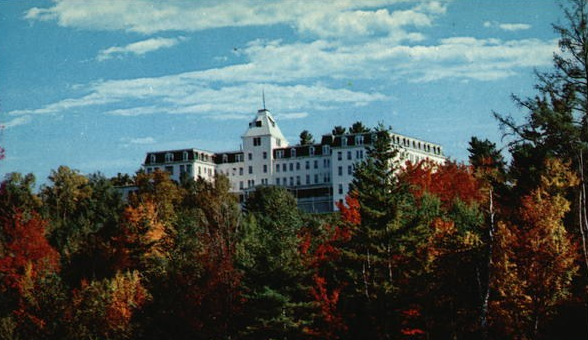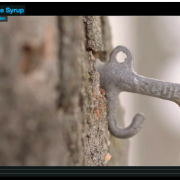Striking a Blow for Justice, Abolitionists Favored Maple Syrup over White Sugar
Fascinating article about how early Americans regarded the sweeteners they craved in their diet. I had no idea that, as explained here, “The pure, white, crystallized product of sugar cane was still an expensive luxury, imported from plantations in the West Indies. Maple sugar offered an accessible and affordable substitute. These colonists, out on the imperial periphery, wanted to demonstrate that their fledgling society was just as sophisticated and elegant as that of the metropole. They took the concentrated maple sap and poured it into conical molds, refining it into white sugar-loaves like those produced in Britain from cane syrup. Maple sugar, a distinctively American product, was touted as the equal of the sugar served in the most elegant Old World salons. The clearest syrups and whitest sugars, which betrayed the least hint of their rustic origins, commanded premium prices.” In “an odd inversion,” the Atlantic’s Yoni Applebaum traces this history all the way down to today, where the more lightly tinted syrup, generally classed as Grade A, often still commands the highest prices. Since my days as a student at Franconia College in New Hampshire’s White Mountains, where we had a sugar house and a biology teacher taught students how to boil down maple sap as part of our science curriculum, I’ve preferred the darker, more flavorful product, classed as Grade B. It puzzled me then, and since, that Grade A was more expensive, and the only kind served in restaurants.** Still, when it comes time to buy a jug for my household, we’re always on the lookout for B, or a Dark Amber A, also a designation used by the US Dept. of Agriculture, which regulates maple products. I must add though, that B is no longer always less expensive than A–folks are catching on to its superiority.
Applebaum makes two more striking observations here, the first connected with the West Indian origins of refined sugar. Abolitionists, noting the slave labor that harvested sugar cane, relished the creation of a product untainted by these corrupt origins. He cites “Philadelphia patriot and physician Benjamin Rush,” who believed “maple sugar” was “perfectly tailored to the new republic. Here was a commodity that could compete in a global market, bolstering the independence of yeoman farmers, and demonstrating the superiority of free labor. It tapped an abundant resource, required only a small amount of labor, and used supplies most farmers already owned. Best of all, it would destroy the market for Caribbean sugar cane, produced by slaves laboring in horrifying conditions. Rush set down his reflections in the form of a letter to his friend Thomas Jefferson, which he presented publicly in 1791, concluding: ‘I cannot help contemplating a sugar maple tree with a species of affection and even veneration, for I have persuaded myself, to behold in it the happy means of rendering the commerce and slavery of our African brethren, in the sugar islands as unnecessary, as it has always been inhuman and unjust.‘”
Regrettably, slavery would remain a blight on our republic for another seven decades, but how perceptive of Rush and his contemporaries to diagnosis accurately–and in their selfsame era–that the diabolical trade triangle connecting West Africa, the Americas, and Britain was a baleful influence that warranted as swift an eradication as possible. The fact that they aimed to do so with a superior product was a market solution that ought to make latter-day economic conservatives quite proud.
Applebaum’s third major revelation in his article so chock-full of surprises is that soon the government, in cooperation with maple syrup producers, is finally going to alter the bogus grading system and replace it with one that more accurately recognizes the authentic merits of the diverse varieties of maple syrup: “The industry has proposed that all syrup sold at retail be relabeled Grade A, and then sorted into four colors: Golden, Amber, Dark, and Very Dark. No longer will the weakest syrup be assigned a higher mark for approaching the perfect purity of utter blandness, or the most intensely flavorful syrup get graded down for daring to taste like maple. The new system, the leading trade group explains, will eliminate ‘the current discrimination against darker syrup.’ By 2013, the new international standard should be fully adopted.”
Finally, I didn’t know, as is pointed out here, that the Log Cabin brand, which first became available in 1887, was then an “adulterated maple syrup;” at least it had some of the real stuff in it then.
So, before you tuck into some pumpkin pie during the coming holidays, read this illuminating article and take some time to reflect on the enterprising American colonists who believed they had at hand a homegrown, local product, superior in every way to any imported confection, and one that didn’t require the subjugation of human beings to bring it to their bountiful tables.
**Two notes of relevance: 1) I have to say it’s pretty amazing that genuine maple syrup of any kind was then put on local restaurant tables gratis; 2) During sugaring, with the sweet, vaporous fumes swirling all around us in the sugar house, our professor, Jon Cassista, instructed his students to eat dill pickles to allay the sugar shock that would otherwise make us quite lightheaded. It seemed to work!)






Leave a Reply
Want to join the discussion?Feel free to contribute!